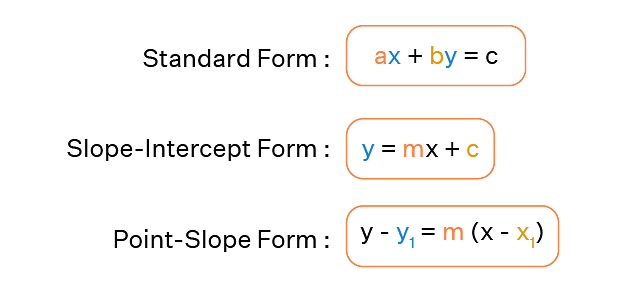If two straight lines whose direction cosines are given by the relations \(l + m – n = 0\), \(3l^2 + m^2 + cnl = 0\) are parallel, then the positive value of \(c\) is :
- 6
- 4
- 3
- 2
The Correct Option is A
Solution and Explanation
\(l + m – n = 0\)
\(⇒n = l + m\)
\(3l^2 + m^2 + cnl = 0\)
\(3l^2 + m^2 + cl(l + m) = 0\)
\(⇒ (3 + c)l^2 + clm + m^2 = 0\)
\(⇒(3+c)(\frac Im)^2+c(\frac Im)+1=0\)
∵ The lines observed are parallel to each other
Therefore, \(D = 0\)
\(⇒ c^2 – 4(3 + c) = 0\)
\(⇒ c^2 – 4c – 12 = 0\)
\((c – 6)(c + 2) = 0\)
\(⇒c = 6\) (because \(c>0\))
So, the correct option is (A): \(6\)
Top Questions on Straight lines
- The equation of a straight line is given by \( y = 3x + 4 \). What is the slope of the line?
- BITSAT - 2025
- Mathematics
- Straight lines
- Find the slope of the line passing through the points $ (1, 2) $ and $ (3, 6) $:
- BITSAT - 2025
- Mathematics
- Straight lines
- The equation of the line passing through the point \((1, 2)\) and perpendicular to the line \(3x + 4y - 12 = 0\) is:
- AP EAPCET - 2025
- Mathematics
- Straight lines
- Find the slope of the line perpendicular to the line $ 3x + 4y - 12 = 0 $.
- AP EAPCET - 2025
- Mathematics
- Straight lines
- The maximum area of a right-angled triangle with hypotenuse \( h \) is: (a) \( \frac{h^2}{2\sqrt{2}} \)
- VITEEE - 2024
- Mathematics
- Straight lines
Questions Asked in JEE Main exam
- If \[ \int_{-\frac{\pi}{2}}^{\frac{\pi}{2}} \frac{96x^2 \cos^2 x}{1 + e^x} dx = \pi(a\pi^2 + \beta), \quad a, \beta \in \mathbb{Z}, \] then \( (a + \beta)^2 \) equals:
- JEE Main - 2025
- Integration
- The value of \( (\sin 70^\circ)(\cot 10^\circ \cot 70^\circ - 1) \) is:
- JEE Main - 2025
- Trigonometric Identities
- Find the equivalent resistance between two ends of the following circuit:

- JEE Main - 2025
- Current electricity
If A and B are two events such that \( P(A \cap B) = 0.1 \), and \( P(A|B) \) and \( P(B|A) \) are the roots of the equation \( 12x^2 - 7x + 1 = 0 \), then the value of \(\frac{P(A \cup B)}{P(A \cap B)}\)
- JEE Main - 2025
- Probability
- The sum of all local minimum values of the function \( f(x) \) as defined below is:
\[ f(x) = \begin{cases} 1 - 2x & \text{if } x < -1, \\[10pt] \frac{1}{3}(7 + 2|x|) & \text{if } -1 \leq x \leq 2, \\[10pt] \frac{11}{18}(x-4)(x-5) & \text{if } x > 2. \end{cases} \]- JEE Main - 2025
- Functions
Concepts Used:
Straight lines
A straight line is a line having the shortest distance between two points.
A straight line can be represented as an equation in various forms, as show in the image below:

The following are the many forms of the equation of the line that are presented in straight line-
1. Slope – Point Form
Assume P0(x0, y0) is a fixed point on a non-vertical line L with m as its slope. If P (x, y) is an arbitrary point on L, then the point (x, y) lies on the line with slope m through the fixed point (x0, y0) if and only if its coordinates fulfil the equation below.
y – y0 = m (x – x0)
2. Two – Point Form
Let's look at the line. L crosses between two places. P1(x1, y1) and P2(x2, y2) are general points on L, while P (x, y) is a general point on L. As a result, the three points P1, P2, and P are collinear, and it becomes
The slope of P2P = The slope of P1P2 , i.e.
\(\frac{y-y_1}{x-x_1} = \frac{y_2-y_1}{x_2-x_1}\)
Hence, the equation becomes:
y - y1 =\( \frac{y_2-y_1}{x_2-x_1} (x-x1)\)
3. Slope-Intercept Form
Assume that a line L with slope m intersects the y-axis at a distance c from the origin, and that the distance c is referred to as the line L's y-intercept. As a result, the coordinates of the spot on the y-axis where the line intersects are (0, c). As a result, the slope of the line L is m, and it passes through a fixed point (0, c). The equation of the line L thus obtained from the slope – point form is given by
y – c =m( x - 0 )
As a result, the point (x, y) on the line with slope m and y-intercept c lies on the line, if and only if
y = m x +c